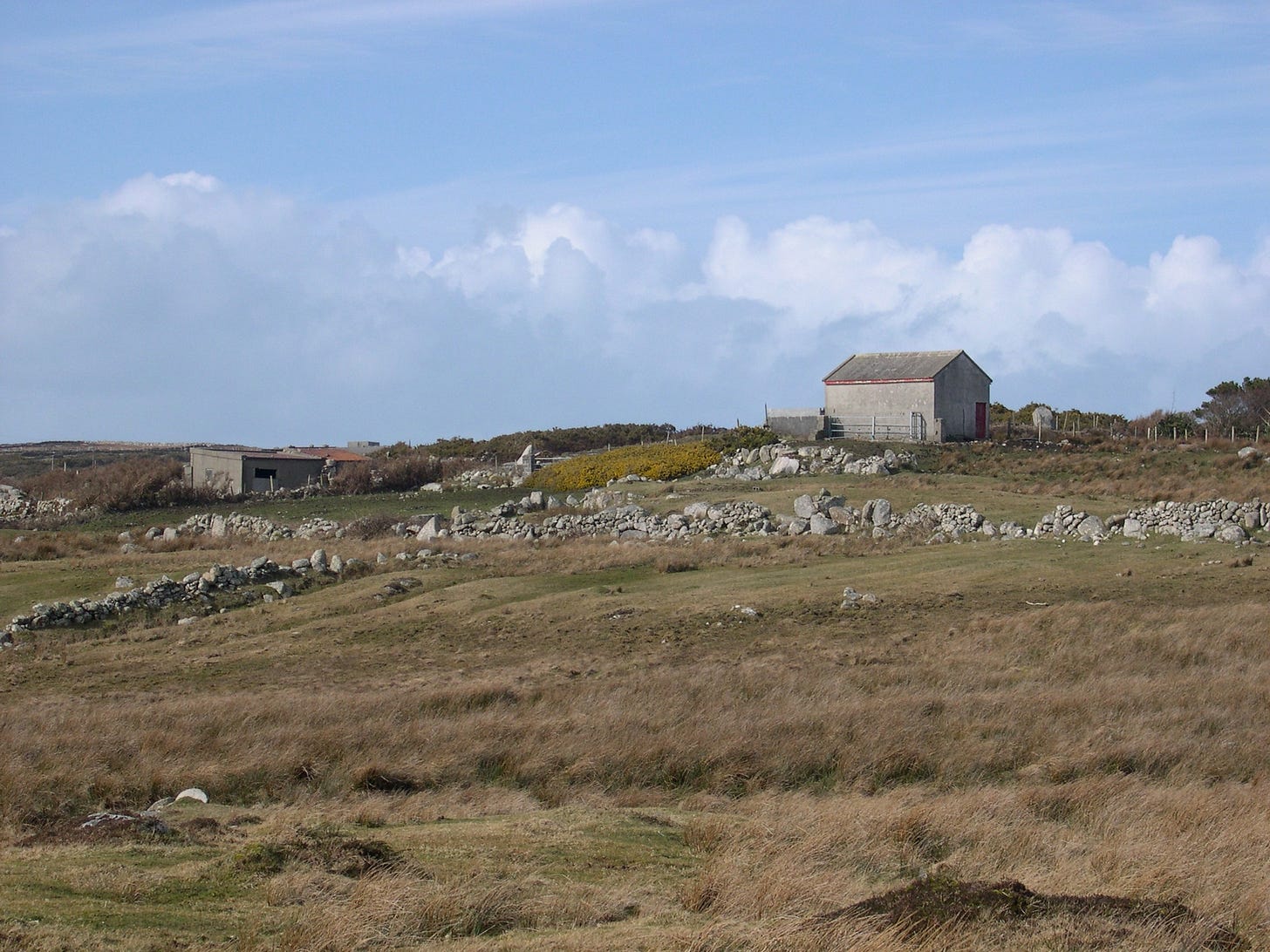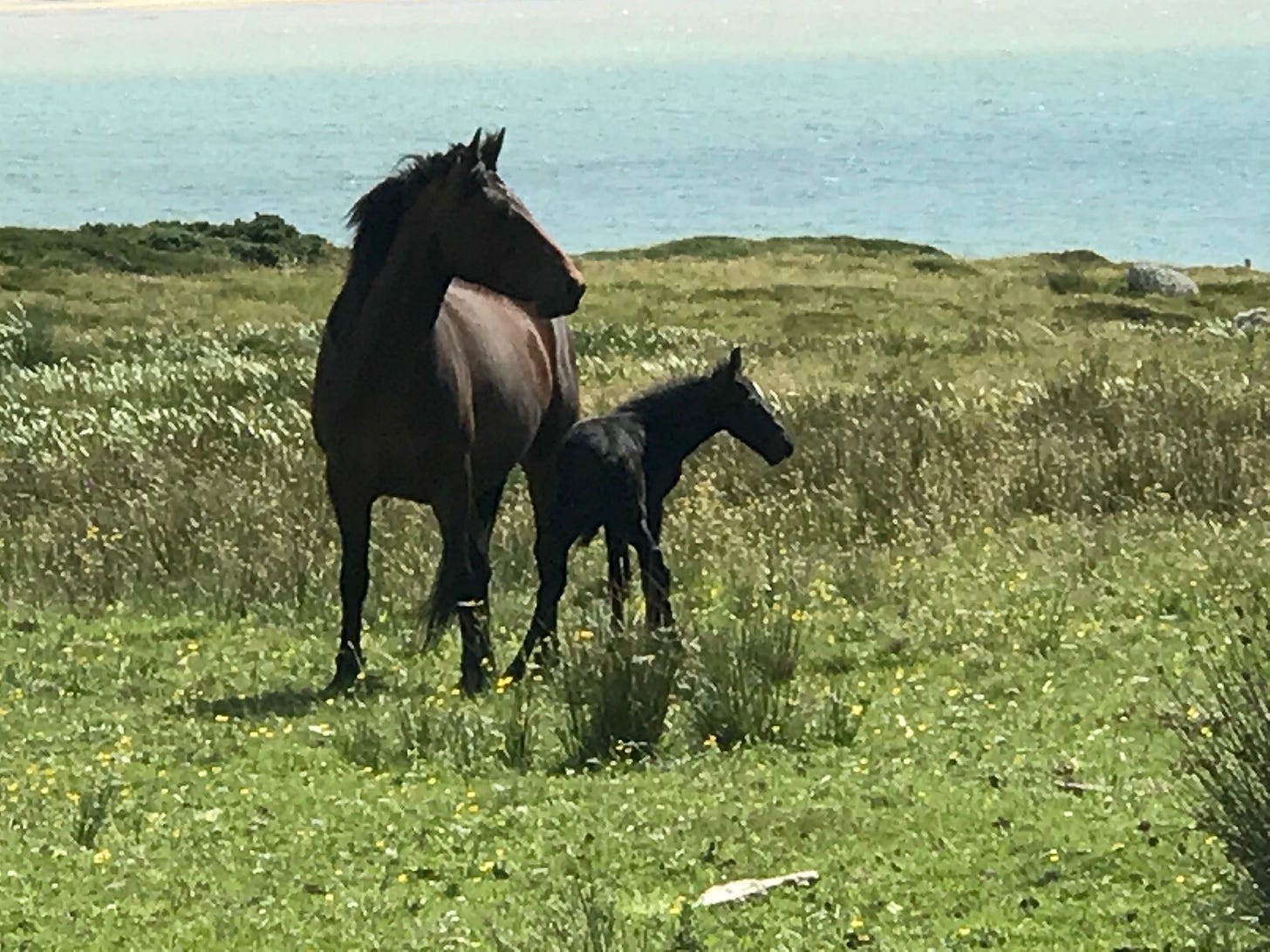O Ye Gates
“B-4”
I walked through the heavy glass doors to the Community Center near Claddaghduff, Ireland, and placed four boxes of candy on the bingo table: caramels and gummies, toffee and chocolate balls. The women stared at me, the corners of their mouths lifting slightly. I shook the boxes open as if to say, Help yourselves. The women reached toward the boxes in the center of the table, then unwrapped the sweets, letting the candies dissolve on their tongues. They nodded their heads as if to say, You’re back. Oh, yes. The Lynch family member from the States. Well, sit down, then.
I took my place at the one empty chair at the side table. Again, I wasn’t in the bingo parlor for the bingo. Well, that’s not exactly true. The game was beginning to hook me. I couldn’t believe the tension I felt in my shoulders, our cards beginning to fill. Would someone call “Bingo” before me? The last time I played bingo here I won £75. Could I do even better?
“G-47”
I was beginning to piece the family story together. Cousin Marie had drawn our genealogy on the back of a napkin in Mannion’s pub. I’d found out the Lynches lived in poverty but were better off than the rest of the relatives on the peninsula. Why? Were they better farmers? Did they work longer and harder than others? Did they just have a bit of luck? They had shoes. Something as basic as shoes creates advantages. The shoes provided more than comfort on the rough cow path to Clifden, the Lynches cart filled with potatoes.
And when the potatoes shriveled up in The Great Famine, An Gorta Mór, how were the Lynches able to survive? How many of them died? How many of them were carried across the strand in a donkey cart in the one communal coffin with the trap door that opened and dumped its cargo on top of the other corpses in a mass grave?
How could I find out more background? Piece together a narrative? How short-sighted humans tend to be. Our family stories are often too traumatic to pass down to our descendants. And we usually only know our own histories for a couple of past generations. I wanted to know how these people lived in the day-to-day. What were their customs and rituals? I wanted a spiritual connection. How could I put a face on any of this? I needed an entry into this world.
“O-66.”
One of the bingo ladies shook several chocolate balls out of a box. She rolled the first sweet around on her tongue, then dropped the other in her big pocketbook at her feet. “There’s a school teacher on the peninsula who knows the history of this place. She knows every family going back generations and generations.”
“Really? How do I find her?”
“She just lives up the road here a bit. I’ll write down her name. You can find her cottage easy enough.”
Well, bless the bingo ladies.
“N-35.”
The next day, I biked around the peninsula, up and down and around the twisty roads until I found Bernadette Conroy’s cottage. I knocked on her door, blurting out my story.
By this time, I knew that the Irish received long-lost relatives and tourists from the States with caution.
“I always worry that the Yanks will want to move in with me,” a Dubliner friend had confessed.
But Bernadette invited me into her living room to tea. We sat in front of her hearth, and gradually, over scones and marmalade, and many more conversations to come, I found that she had grown up in this cottage, that her father had been the currach maker, that she had begun her teaching career on Inishturk, an island just off the coast.
Turk had just two families, and one school with less than a dozen students at any one time. Early on Monday mornings, Bernadette took her clean laundry and supplies down to the bay. A fisherman loaded up the teacher and her provisions in his currach, and rowed to the island, arriving in time for Bernadette to start the lessons for the day.
Over the years, Bernadette had received many visits from the inspector, a man she had found kind and helpful. She got to know her pupils well and discovered that most of the children had never left the island. She hoped to widen their vision. So she hired another fisherman to row the whole school to the mainland where she toured them all over Connemara, including a stop at Kylemore Abbey.
“Miss took us to a castle!” a student wrote when they returned to school. “Two big doors opened into a walled garden.

“N-36.”
Early each morning when Bernadette was young, she and her brother drove the cattle to their pasture. The pasture was walled in with native stone, but there was no gate. In a treeless landscape, wood was hard to find, and a metal gate way too expensive. So, every morning and evening, Bernadette and her brother would disassemble the wall, placing the rocks aside. They then guided the cattle through to eat the grass. Once the cattle were grazing, the two children piled up the rocks and enclosed the pasture again. In the evening, the siblings went through the same ritual, then brought the cows home to the barn for the night.
“I-18.”
Eventually, Bernadette took an appointment teaching at the Claddaghduff school. She got to know all the pupils who passed through its gate, their families, and the rituals that shaped their lives. Eventually, she wrote three award-winning books about the area—one about the school, another about Omey Island, and a third, Waves on the Shore, about Inishturk. She included the families, the history and natural history, the arts, literary background and sciences of all three places, and their surrounding cultures.
During our time together, Bernadette toured me around the area, showing me the bay where she left for Turk every Monday morning, the pasture where she grazed the cattle, and the schoolhouse where I’d volunteered to work with the students. She drove me across the strand to Omey and introduced me to Pascal, the last full-time resident of that island. Pascal had made his living as a movie stuntman, falling from heights, walking on a bed of nails, teaching Peter O’Toole how to sword fight, and squeezing out of chains like Houdini.
“Well, if it isn’t the Poet Laureate,” Pascal bowed to me in his little caravan tied down with straps to keep it from blowing away in the wind.
“B-15.”
Back on the mainland, Bernadette drove through Patches, the township that was written in the return address on all the letters I had at home:
Lynch
Patches
Claddaghduff
Clifden, Ireland
“Have you seen your family’s old cottage?” Bernadette asked.
“Yes, right there,” I said, pointing to a two-story building.
“Tisn’t the house at all.”
“What? What’s that building?”
“That’s a barn,” Bernadette said.
“Where’s the house, then?” I asked. I couldn’t see any other building from the car on the road.
“You’ll have to get out and climb through there to find it,” Bernadette said, pointing to a large metal gate padlocked shut with a heavy chain.
I am pleased to be a member of the Iowa Writers Collaborative. This week, Wini Moranville launched a new memoir called Love is my Favorite Color, University of Iowa Press. Follow us in the Sunday Round-Up.






And then? Did you climb through and see the house?
On the edge of my seat as usual. I hope this is a first installment with more, more, more to come. Did you climb through the gate? Did you win again at bingo? And what about the daily lives of the Lynches? More, more, more!